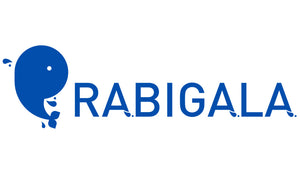Snow Sports
Why We Create Ski Goggles?
With a firm determination to help more people get involved in skiing, Rabigala is committed to doing something for those who love skiing. After market research, the Rabigala design team concluded the following common problems with ski goggles:
- The inside of the ski goggles is easy to fog, which gives a terrible skiing experience.
- Many ski goggle frames are rigid in texture. If a bump occurs, it will cause great damage to the head.
- The facial sponge of ski goggles can easily cause facial allergies.
- The headband of many ski goggles can't fit the helmet and loses elasticity after a period of use.
- There will always be gaps after wearing ski goggles, and the air will affect the eyes through these gaps when skiing.
- The quality of the lens is too poor, and it is easy to break.
How We Do
After the goal is clear, the Rabigala design team also needs to understand the specific needs of ski enthusiasts, only by clarifying the requirements of ski goggles users can make ski goggles suitable for them. Through questionnaire surveys and field investigations, the Rabigala design team has learned a lot of problems that were not found in market research before, and collected a lot of users' real feedback on ski goggles products, various problems encountered and suggestions for ski goggles. These are what Rabigala needs to address and improve.
Problem Solutions
A. Solve The Fogging Problem of Ski Goggles:
- In order to solve the problem that ski goggles are easy to fog, the Rabigala design team has made various improvements to the ski goggles.
- Firstly, the Rabigala design team conducted the anti-fog test of single-layer ski goggles and double-layer ski goggles, and the Rabigala design team specially applied the production of multiple single-layer ski goggles and double-layer ski goggles for anti-fog testing.
- In the anti-fog coating of ski goggles, the Rabigala design team also made improvements. The lens with the improved anti-fog coating was placed on a hot water cup together with the previous anti-fog coating lens for anti-fog testing, and the Rabigala design team was pleased with the results.
- The Rabigala design team also designed ventilation holes on the upper and lower parts of the ski goggle frame and increased the number of ventilation holes to form a better intelligent anti-fog system.
B. Improve The Frame of Ski Goggles
- The Rabigala design team found that many ski goggle frames are made of plastic as raw materials. The ski goggle frames produced from plastic not only feel hard to the touch but also break easily when impacted, which can easily cause damage to skiers. The Rabigala design team conducted a comparative analysis of various raw materials, from material safety, and material characteristics, to whether the material is environmentally friendly, and finally selected TPU as the only raw material for ski goggle frames.
- For other problems with ski goggles, such as poor lens quality, foam can cause allergies, ski goggle straps can not fit ski helmets, and other issues, the Rabigala design team has made corresponding solutions. Soon after, a complete ski goggle design process appeared on a blackboard in Rabigala's office.
- The detailed design ideas have given Rabigala a very clear direction, and it is one step closer to the advent of Rabigala ski goggles.
- Choosing a selection results in a full page refresh.

